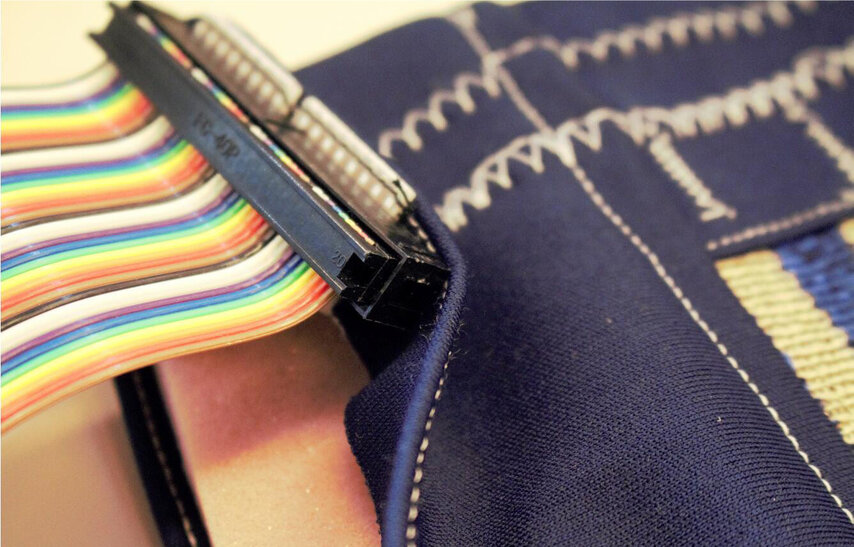Textile pressure sensor for car seats
Pressure sensors and sensor mats are often used in comfort research for generating pressure maps monitoring posture of the upper body. Such products are good at generating real time high resolution data but have the disadvantage that they contain a polymer layer which is not breathable and which can be expected to compromise the user’s comfort during long drives, especially in conditions where sweating occurs. Moreover these sensor mats cost several 10.000’s euros which makes them less suited for continuous posture monitoring in everyday environments like a car interior, a living room or an office.
The aim of the this project was to develop a simple textile based sensor layer which could be integrated in a car interior to monitor the posture of the driver. Since the sensor mat had to be breathable we chose to make a knitted sensor consisting of two layers with perpendicularly oriented conductive sensor lines and a deformable spacer layer in between and measure the capacitance changes at the cross over points of the sensor lines when a pressure is applied. We constructed a seat sensor with 12x4 sensor nodes and a lumbar support sensor with 8x4 nodes.
The figures below show the design process, calibration tests of the sensor mats with different spacer materials as well as posture monitoring tests. This study shows that it is feasible to make well-functioning sensor layers which can be integrated in everyday objects and in principle can be used for continuous posture monitoring without compromising to the users comfort. Moreover, these textile based sensor arrays can be mass produced on in industrial knitting machine and should not cost more than a few hundred euros.




Kaspar Jansen
- +31 (0) 152786905
- k.m.b.jansen@tudelft.nl
-
Room B-3-170
Project team
Graduate student
- Yixuan Ma
Supervision
- Kaspar Jansen (chair)
- Alice Buso (mentor)
- Linda Plaude (Textile design)





